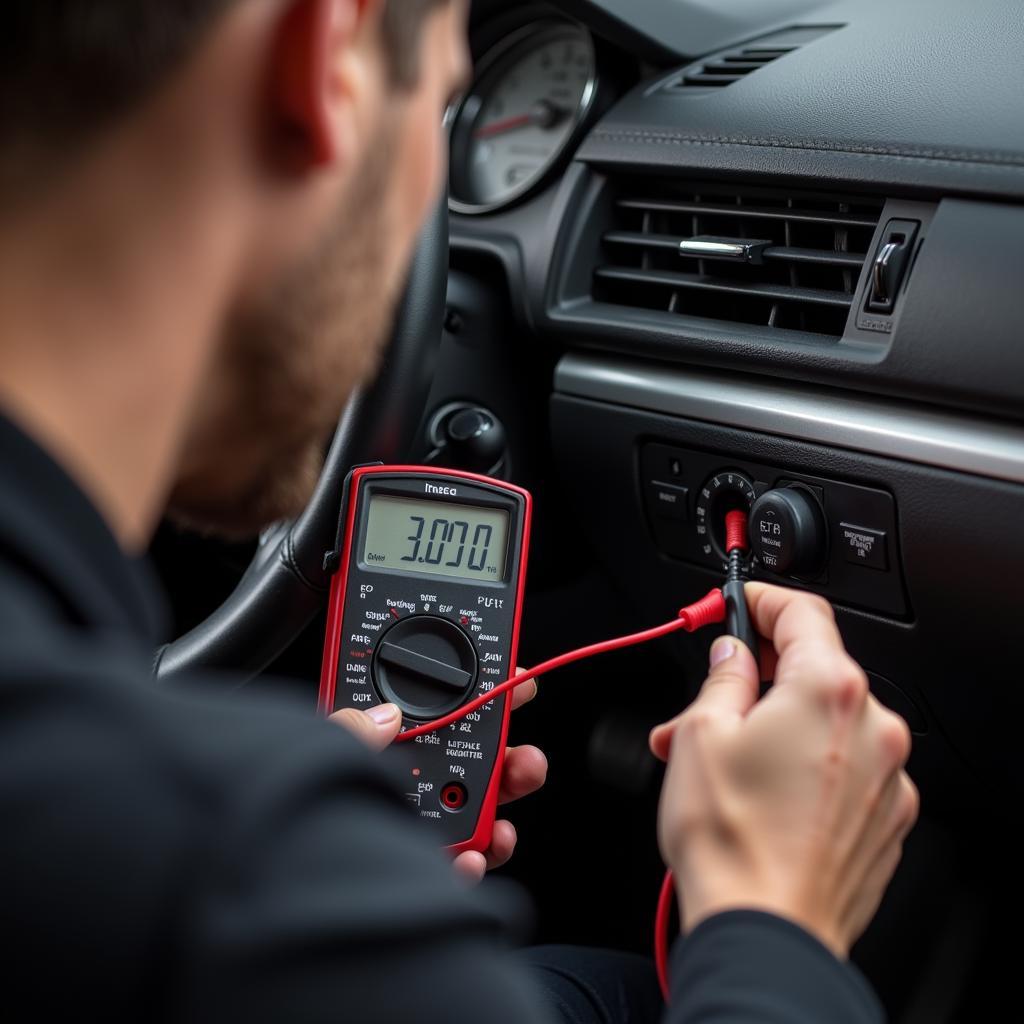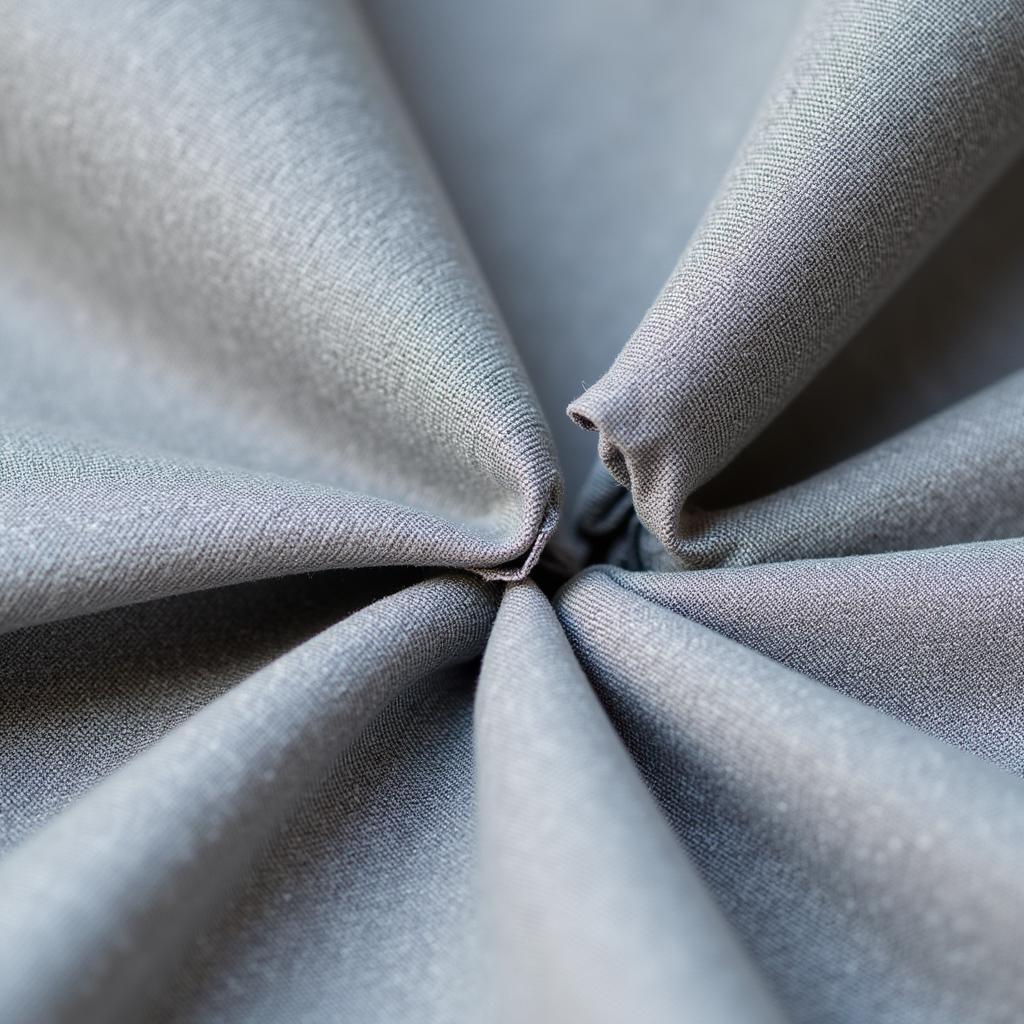A tear in your cloth car seat can be an unsightly nuisance. It can also decrease the resale value of your vehicle. Fortunately, fixing a tear in cloth car seat is often a manageable DIY project, depending on the severity of the damage. This guide provides several methods for repairing cloth car seat tears, ranging from simple quick fixes to more involved repairs.
Identifying the Type of Tear and Gathering Your Supplies
Before you begin, assess the damage. Is it a small snag, a straight tear, or a larger, more complex rip? This will determine the best repair method. Gathering the right supplies is also crucial. For minor repairs, you might only need a needle and thread. More significant tears might require a patch, fabric glue, or even a specialized repair kit. For example, a small snag can often be fixed with a simple stitch, while a larger tear might require patching.
Similar to fixing car headliner, proper preparation is key for a successful repair.
 Types of Cloth Car Seat Tears
Types of Cloth Car Seat Tears
Simple Repairs for Small Tears and Snags
Small snags and tears can often be repaired without a patch. For a snag, carefully pull the loose threads through to the backside of the fabric using a needle. Knot the threads securely to prevent further unraveling. For small, straight tears, you can use a needle and thread matching your car seat’s color to stitch the tear closed. Use a small, discreet stitch to minimize the repair’s visibility. Remember, patience is key to achieving a seamless repair.
Patching Larger Tears: A Step-by-Step Guide
Larger tears require patching. First, choose a fabric patch that closely matches your car seat’s material and color. You can often find matching fabric at upholstery shops or online. Cut the patch slightly larger than the tear, ensuring it covers the damaged area completely. If the tear is on a seam, you may need to remove the seat cover for better access and a more professional-looking repair. This is akin to how to fix interior fabric in car, where detailed repair may involve addressing underlying fabric issues.
 Applying a Fabric Patch to a Car Seat Tear
Applying a Fabric Patch to a Car Seat Tear
- Prepare the Tear: Clean the area around the tear with a mild fabric cleaner. Allow it to dry completely before proceeding.
- Apply Fabric Glue: Apply fabric glue to the underside of the patch. Follow the manufacturer’s instructions for drying time.
- Position the Patch: Carefully position the patch over the tear, ensuring it aligns with the existing fabric pattern. Press firmly to secure the patch.
- Secure the Edges (Optional): For added durability, you can sew the edges of the patch to the car seat fabric. Use a matching thread and a small, discreet stitch.
John Miller, an experienced auto upholsterer, advises, “When choosing a patch, consider the fabric’s texture and weight. A patch that’s too heavy or too light will stand out.”
Using a Cloth Car Seat Repair Kit
Cloth car seat repair kits are readily available and offer a convenient solution for various types of tears. These kits typically include fabric patches, adhesive, and tools to help you complete the repair. Follow the kit’s instructions carefully for the best results. While these kits are user-friendly, matching the fabric to your car seat is essential for a seamless repair.
Just like how to fix faded car seats, addressing the underlying issue is important for long-term results.
 Using a Car Seat Repair Kit
Using a Car Seat Repair Kit
Preventing Future Tears
Prevention is always better than cure. Regularly cleaning and conditioning your car seats can help prevent the fabric from drying out and becoming more susceptible to tears. Using seat covers can also provide an extra layer of protection. Avoid dragging sharp objects across your seats, and be mindful of pets’ claws.
Maria Sanchez, an automotive detailing expert, recommends, “Regularly vacuuming and cleaning your car seats can prevent dirt and debris from weakening the fabric fibers, reducing the risk of tears.”
Conclusion
Fixing a tear in your cloth car seat is often a manageable task. Whether you’re dealing with a small snag or a larger rip, the methods outlined in this guide can help you restore your car seat’s appearance and prevent further damage. Remember to assess the damage, gather the appropriate supplies, and follow the instructions carefully. For professional assistance or more complex repairs, don’t hesitate to contact us at AutoTipPro. Reach us at +1 (641) 206-8880 or visit our office at 500 N St Mary’s St, San Antonio, TX 78205, United States.
This process is often less costly than how much does it coat to fix.leather.car seats. Understanding the different methods for fixing a tear in a cloth car seat helps you choose the best approach for your specific situation.
FAQs
- What if I can’t find a matching fabric patch? You can use a contrasting fabric to create a decorative patch or consult an upholstery shop for custom matching.
- Can I use super glue instead of fabric glue? Fabric glue is recommended as it’s designed for use on fabrics and is less likely to cause stiffness or discoloration.
- How long does it take for the repair to dry? Refer to the instructions provided with your chosen repair method (glue, kit, etc.) for specific drying times.
- Is it better to sew or glue a patch? Sewing provides a more durable repair, while gluing is quicker and easier.
- What if the tear is on a curved surface? Use smaller patches or cut notches in the patch’s edges to allow it to conform to the curve.
- How can I prevent my pets from tearing my car seats? Use pet seat covers or train your pets to stay in a designated area of the car.
- Can I fix a tear in a heated car seat? If your car seat has heating elements, it’s best to consult a professional for repair to avoid damaging the heating system. Similar to how to fix a cut in leather car seat, professional help is recommended for complex repairs involving embedded components.






Leave a Reply